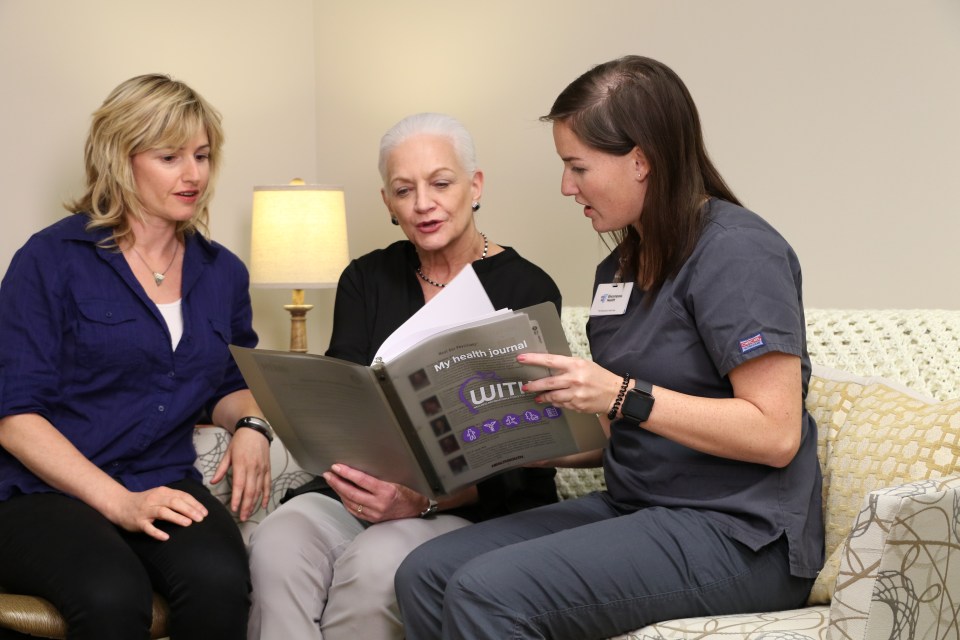Speech therapy is the practice of improving the function of mechanisms above the base of the neck. At Encompass Health, this process involves a series of activities that help patients recover and fine-tune communication skills such as word finding, word production, memory articulation and sentence formation, in addition to swallowing problems and cognitive impairments.
Many ailments can result in a need for speech therapy. Patients recovering from traumatic brain injury sometimes experience cognitive damage that affects speech and memory, while victims of stroke can struggle with physical weakness in the tongue and throat muscles that make it difficult to swallow food and control breathing. The extent of these complications varies by individual.
Speech Therapy Exercises Range from Simple to Complex
Speech therapy regimens are unique to a patient’s abilities. To improve communication, activities often include the use of matching games and picture cards, repetitive counting, song singing and exercises using a diary, journal, newspaper or other material that may stimulate vocal recollection.
“It’s a trial and error process, and we take the time with each patient to figure it out,” said Shannon Wiggins, director of therapy operations at Encompass Health Rehabilitation Hospital of Shelby County.
“The patient may need to practice holding objects and identifying them, or we’ll flip through a photo album and try to name familiar faces, then document their vocal cadence, pitch and any stuttering or memory obstacles. Those simple exercises can help so much.”
Speech therapists also work with Encompass Health dietitians to modify the diets of those patients with swallowing issues, ensuring they have access to chopped or pureed meals and snacks during recovery if necessary.
How Speech Therapy Differs from Other Rehabilitation Specialties
Encompass Health’s interdisciplinary approach to care means that patients often receive a variety of therapy. Physical therapists begin by helping patients regain their strength and improve balance, coordination and mobility. Occupational therapists then help individuals independently perform tasks such as cooking and bathing. For patients with communication issues and swallowing disorders, speech therapists step in to work specifically on the muscle strength necessary for speech and swallowing.
“If a patient is struggling to move their leg, a physical therapist can move the person’s leg on their behalf,” Wiggins explained, “but a speech therapist cannot speak or swallow for a patient. That’s the big difference between speech therapy and other disciplines.”
Innovative Technologies Make Recovery Possible
Use of neuromuscular electrical stimulation tools can help relieve patients of the emotional, physical and financial burdens of feeding tubes, which is why some Encompass Health hospitals are equipped to help patients improve swallowing using virtual reality. Biofeedback systems measure the strength of the throat muscles and allow patients to view their swallowing motion on a computer screen. Much like a video game, patients complete interactive activities in order to generate objective feedback. These engaging visualizations empower speech therapists to help patients recover these skills.
“The rehabilitation process isn’t one-size-fits-all,” Wiggins remarked. “Each patient has a different path to success and it’s our mission to find out what works.”
The content of this site is for informational purposes only and should not be taken as professional medical advice. Always seek the advice of your physician or other qualified healthcare provider with any questions you may have regarding any medical conditions or treatments.



